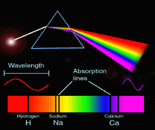|
|
|
|
Special Issue: NMR and Diffusion . Issue
Edited by Gareth A. Morris.
Published Online: 8 Nov 2002
Copyright © 2002 John Wiley & Sons, Ltd.
|
|
|
|
Research Article
| Artefacts and pitfalls
in diffusion measurements by NMR |
| Geir Humborstad Sørland
1 *, Dagfinn
Aksnes 2 |
1Department of
Chemistry, Norwegian University of Science and
Technology, N-7491 Trondheim, Norway
2Department of Chemistry,
University of Bergen, N-5007 Bergen, Norway
|
| email: Geir Humborstad Sørland (gsoerlan@online.no) |
*Correspondence to Geir
Humborstad Sørland, Department of Chemistry, Norwegian
University of Science and Technology, N-7491 Trondheim,
Norway.
Funded by:
 Research Council of Norway. Research Council of Norway.
| NMR • pulsed field gradient •
diffusion |
| When applying pulsed field gradient (PFG) NMR
experiments to determine the molecular mobility
characterized by the diffusion coefficient, it is
crucial to have control over all experimental parameters
that may affect the performance of the diffusion
experiment. This could be diffusion measurement in the
presence of magnetic field transients, internal magnetic
field gradients, either constant or spatially varying,
convection, mechanical vibrations, or in the presence of
physical restrictions affecting the diffusion
propagator. The effect of these parameters on the
diffusion experiment is discussed and visualized. It is
also outlined how to minimize their influence on the
measured diffusivity that is extracted from the PFG-NMR
experiment. For an expanded and more general treatment
we refer to the excellent reviews by Dr William S. Price
(Concepts Magn. Reson. 1997; 9: 299; 1998; 10:
197) and the references therein. Copyright © 2002 John
Wiley & Sons, Ltd. |
Received: 27 May 2002; Revised: 3 September 2002; Accepted: 5
September 2002
10.1002/mrc.1112 About DOI |
|
Related Articles
- Find other articles
like this in Wiley InterScience
- Find articles in Wiley InterScience written by any of the authors
Wiley InterScience is a member of CrossRef.

|

 |
Analytical Sciences Backfile
Collection
(1968-1998) |
|
Fully searchable and live-linked with current web
content, this backfile brings the complete contents of
13 leading journals – 188,000 pages – to your desktop. A
one-time fee delivers ongoing access.
Find
out more
Request
a Quote | |


Need an article reprint?
Paper or electronic reprints are available for all
articles published on Wiley InterScience. Inquiries can be
submitted online.
Find
out more |


This journal is listed in the U.S.
National Library of Medicine's PubMed index.
|

 |
Request
a Free trial
or a guided Web
demo |
|
SpecInfo is now available online with over 434,000
curated spectra for quality research results.
Sign
up now | |

|
See OnlineBooks
from Wiley InterScience
in...
|
 |
Chemistry |
 | |

|
See OnlineBooks
from Wiley InterScience
in...
|
 |
Spectroscopy |
 | | |
|



 Research Council of Norway.
Research Council of Norway.




